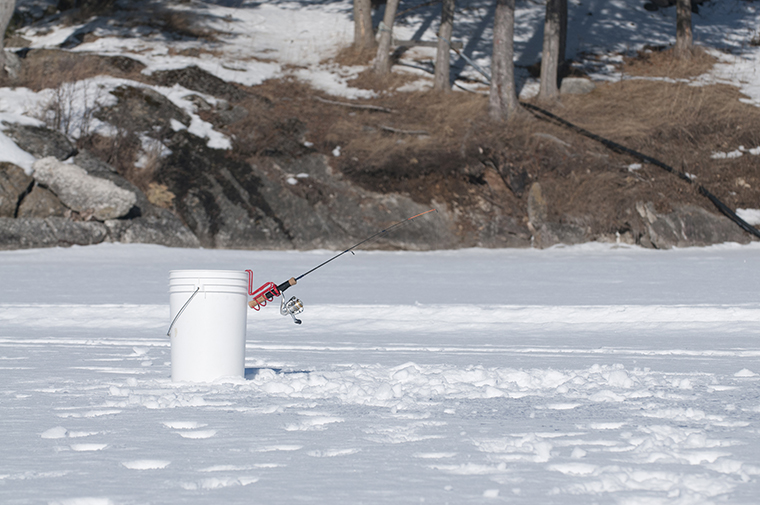
At least once every winter, deadsticking walleye saves my bacon and catches fish uninterested in biting jigging lures. While soaking a minnow is a simple finesse approach, paying attention to details will boost success. Here is a rundown of the method.
The rod, reel, and line
Buying a technique-specific rod is money well spent when it comes to deadsticking. Rod blanks are often fibreglass and have a slow, noodle-like action from the tip to midsection. This lets a walleye take the bait with little resistance, which means more and better hook-ups. The easily bent rod is also a great strike indicator.
Many deadstick rod tips are sensitive enough to transmit a minnow’s swimming. This helps to monitor the bait’s liveliness and know when to rebait. An especially frisky minnow is often a clue a walleye is prowling nearby.
Deadsticks are more than just wispy wands, however, and the hallmark of a quality rod is blank-blending power with sensitivity. The Thorne Bros. model I use has plenty of backbone in the lower section for playing and landing quality walleye.
Oversized rod guides are a good idea if you regularly set lines outside of a heated ice house, as their larger diameters take longer to freeze up than smaller guides. And, while short handles are a trend for jigging rods, most deadsticks have a long handle. The added length helps secure it in a rod holder and makes it easier to grab the rod from the holder with a gloved hand.
The reel should balance with the rod. It must also have a reliable, smooth drag. Monofilament is a good choice given its stretchiness and 8-pound is plenty strong for most walleye. Tie a small barrel swivel 18 inches above the jig to reduce line twist.
Use a reliable rod holder
Balance-style rod holders are popular for deadsticking because they allow the rod to rock up and down, increasing sensitivity and strike detection. I had my eyes opened to how potent these holders can be over a decade ago when I watched Davis Viehbeck use one on Lake of the Woods. I didn’t keep count, but I certainly had an extra serving of walleye that night thanks to this set-up.
The balance holder I use is Today’s Tackle Rod Rocker 2. It can be hard to find locally, but is available by clicking here. It ships from the U.S.
Non-balanced rod holders are also effective. Berkley’s Bucket Rod Holder is one option I’ve used with good success.
The jig and bait
I often deadstick using a live minnow on a vertical teardrop-shaped jig, like the Northland Fishing Tackle Forage Minnow Jig and Custom Jigs and Spins Demon. Other anglers I know use an “eye” jig, which is another style of vertical jig. If you don’t own teardrop jigs, use a horizontal version or small treble hook. Hot, metallic, and glow painted jigs fill my box, as they add attraction and boost bites.
Depth considerations
Setting a jig and minnow under a dead-stick rod is all about determining walleyes strike-zone depth. Inactive walleye are often tight to bottom and have a small strike window. Here, a minnow placed on or just inches from bottom can be best. The drawback, though, is the closer the bait is to the floor, the fewer walleye can see it from a distance, especially when the bottom is rocky or irregular.
When fish aren’t glued to bottom, I’ll set a minnow 8 to 16 inches above the floor to help it get noticed. Plus, a minnow suspended off bottom is an easy meal for an active walleye with a large strike zone.
Deadsticking walleye position
Consider where the deadstick is positioned in relation to the angler. Setting one in a hole three feet from where you’re jigging is one strategy. Working a rattling spoon, lipless crank, or jigging minnow attracts and catches aggressive walleye, while fish too shy to strike the lure often succumb to the temptation of the vulnerable minnow dangling nearby.
Having a deadstick farther away is useful for covering water. This approach is great for learning how walleye are moving on a flat, hump, or other type of structure. After learning the travel route, you can fine-tune your position to catch more of them.
Jigging feedback
It helps to use a portable sonar if you have one. When you catch a walleye, make a note of the depth it approached at and where it hit in the water column. This is a clue to the depth walleye prefer and where you should position baits.
If you aren’t already using a deadstick for walleye, consider trying one this season. It’s one of the easiest and most consistent ways I know to catch walleye on the ice.

Tim Allard is a full-time freelance journalist and photographer based in Ottawa. He’s the author of the multi-award winning book Ice-Fishing – The Ultimate Guide.
Originally appeared in the Nov.-Dec. 2018 issue of Ontario OUT of DOORS magazine.


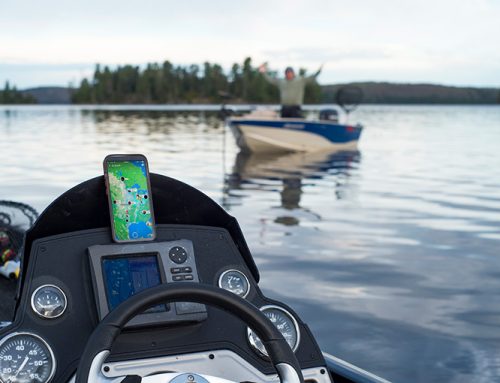
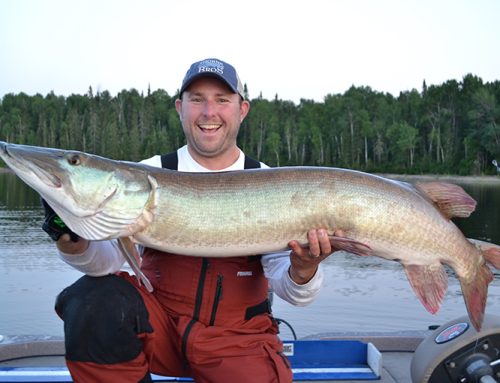
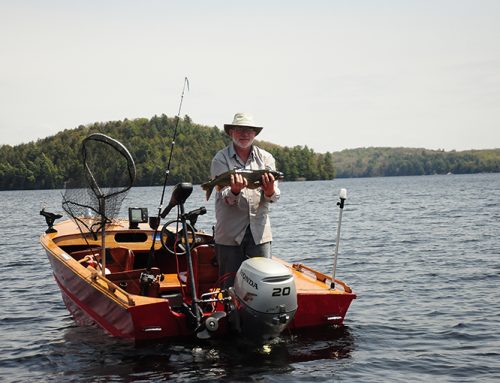
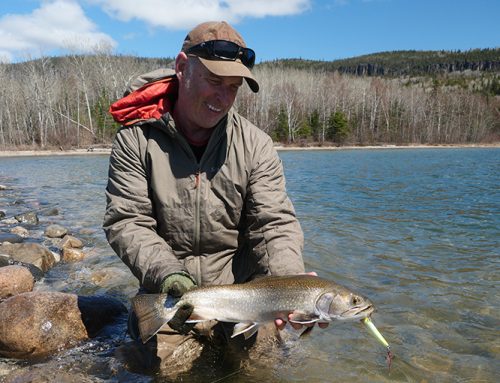
Leave A Comment